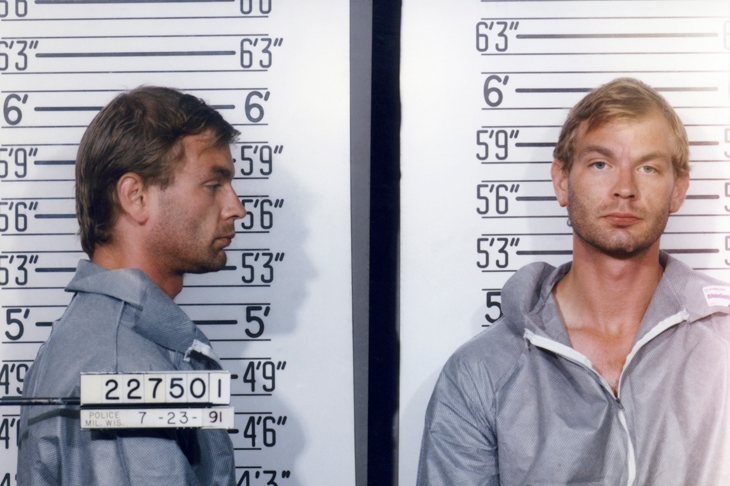Apparently there’s a new ‘character’ on University Challenge. I wouldn’t know. Last year, I vowed never again to raise my blood pressure by exposing myself to its new, gender-balanced questions: ‘Your starter for ten: which composer of Serenade for My Cat, rated by her father as the equal of Bach’s Goldberg Variations…’ Don’t know. Don’t care. You bastards ruined it, just like you ruined Sanpellegrino and Lucozade.
Same applies, now I think about it, to all the other programmes on the BBC. I never watch anything on it for pleasure these days: only out of duty — to see what the enemy is thinking — and also so I can keep up to date my list of all the people I’m going to have exiled to bare rocks in the Outer Hebrides when I’m king. It’s the kindest thing. They can live on puffins and inbred Soay sheep and discover their inner selves.
Two people I’d dispatch there immediately are Selina Scott and Stephanie Beacham. Yes, I thought they were innocent too — one that fragrant newsreader from the 1980s, the other the fragrant star of Tenko and Dynasty. But no — thanks to The Real Marigold Hotel (the BBC’s fake, patronising I’m A Celebrity for oldsters you’re mildly tickled to learn aren’t dead yet) — we learn that they are both slightly prickly, precious luvvies who can’t look at an Indian street scene without gushing about its ‘vibrancy’ and ‘diversity’. Such crimes cannot go unpunished.
So where do you go instead? Well, Netflix is the obvious place. This week, I’ve been trying out its answer to Louis Theroux — an amiable Kiwi called David Farrier who has the same-shaped glasses and the same insinuating manner but happily none of that weapons-grade cockiness they teach you at Westminster. His series Dark Tourist, in which he explores the world’s weirder, more dangerous or macabre holiday destinations, is certainly watchable enough to merit a second season.
Probably, I wouldn’t have thought that if I’d only seen the episode where he goes to Britain and engages in second world war re-enactment. His riff about the awkwardness of playing soldiers against people dressed in actual ‘Nazi’ uniforms struck me as lazy, predictable, canting. About 13 million Germans wore army uniform in the second world war, some no doubt horrible and evil, many more just grimly getting on with a job they couldn’t avoid. The idea that this patch of important, fairly recent history should be rendered off-limits because of the air-headed campus trope that the Nazis were uniquely evil is just insulting. It’s also rude to the groups that generously hosted Farrier: all they want to do is to relive history as authentically as they can; all journalistic interlopers ever want to do is point the finger and go: ‘Eek! A swastika!’
Generally, though, Farrier’s travelogues are great — especially when he relaxes, gives the story space and lets events take their own course rather than (as TV documentaries tend to do) follow a prearranged narrative. In the wastes of central Kazakhstan he teams up with a fellow dark tourist to explore the fall-out from decades of Soviet nuclear testing. Somewhat trepidatiously, they swim in a radioactive crater lake created by a vast underground explosion. Their guide’s limited English and government affiliations make it hard for them to ascertain how dangerous this is. Ditto the vodka-fuelled lunch of freshly caught fish they are compelled, out of politeness, to eat when they meet some local fishermen. Nervous jollity gives way to unexpected pathos and guilt when, in the nearest town, they meet a doctor whose wife and children all died of radioactive poisoning. He takes them to an orphanage where sick children, some with heartbreaking defects, lie floppy and helpless — loved but hopeless — smiling up from their cots.
In Milwaukee, he goes touring in the footsteps of Jeffrey Dahmer — probably the serial killer’s serial killer because of the relish and Silence of the Lambs-style ritualism with which he pursued his hobby. Dahmer’s lawyer shows Farrier a drawing he did for her detailing the arrangement of his shrine: the row of skulls, illuminated from above; the special black chair in which he sat to admire his work.
There are people, it turns out, who are obsessed with this ghoulish stuff almost to the point of erotic fixation. On the Dahmer tour — which visits spots like the gay club where he picked up his victims — the punters are mostly single women in their thirties for whom this gay, torturing, cannabalistic multiple murderer is somehow their ideal imaginary partner. Well, girls do love a guy they think they can reform, I suppose.







Comments